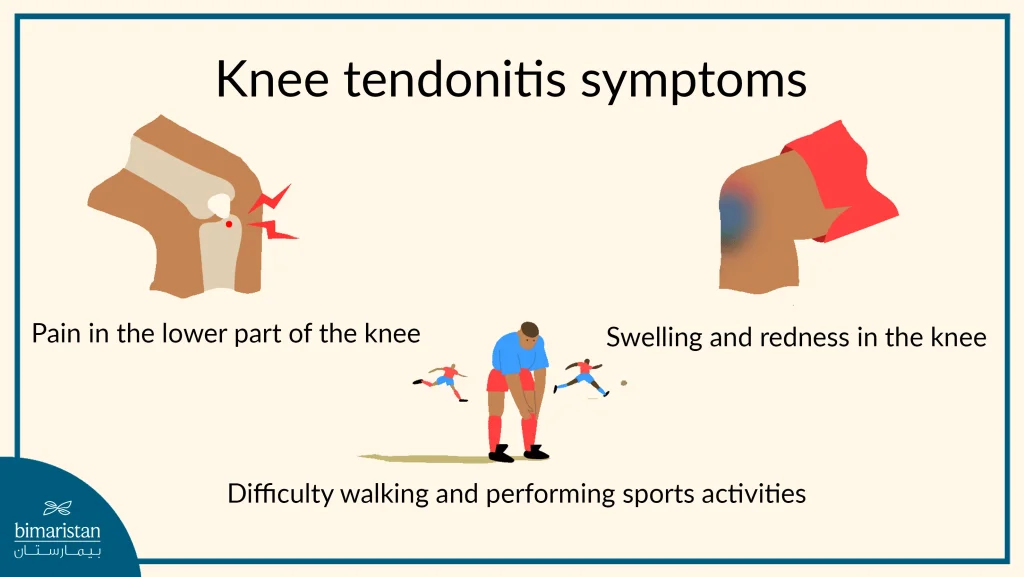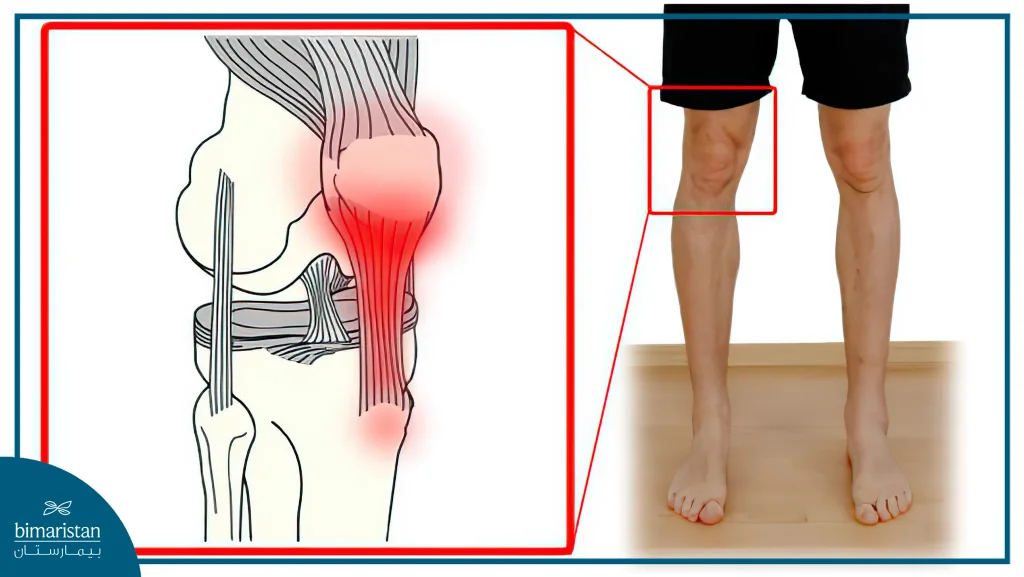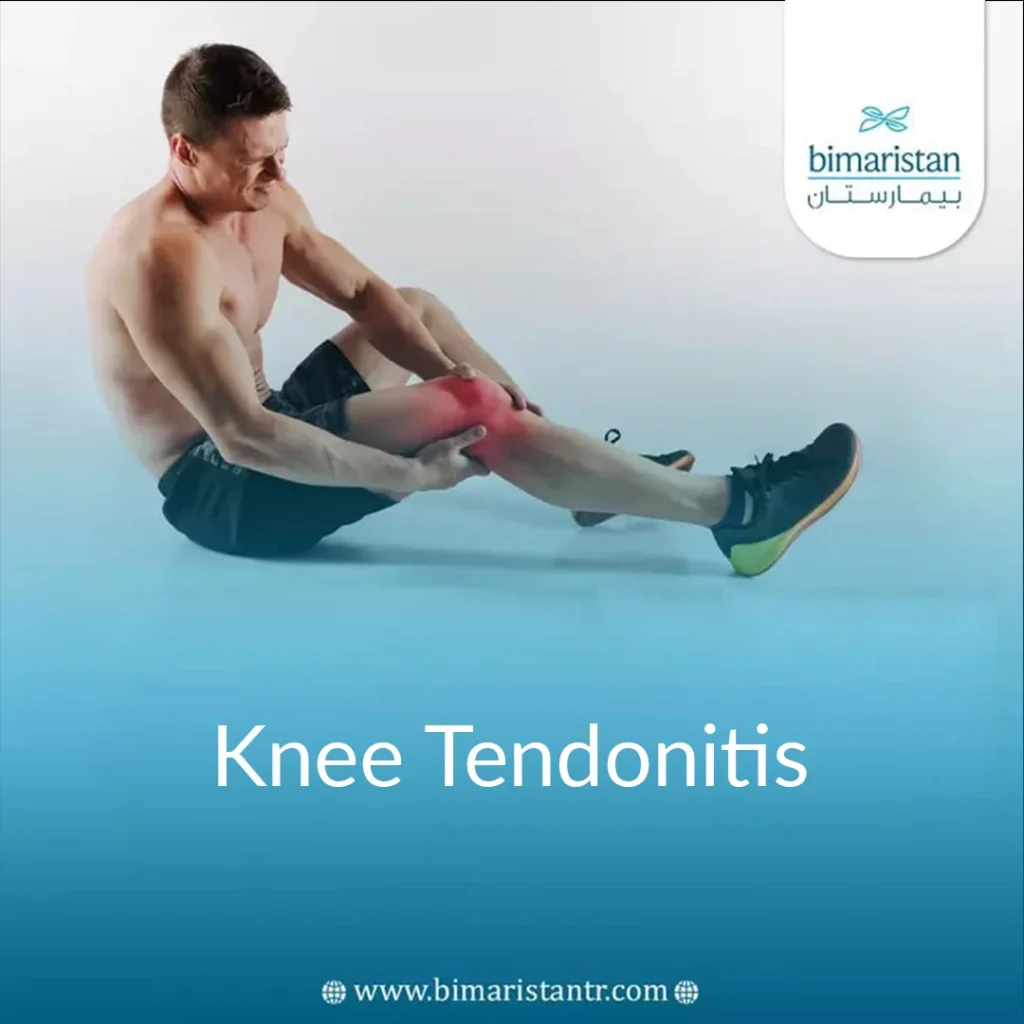When you experience inflammation in the tendons of your knee, you’ll feel increasing pain with movement. Knee tendonitis tends to be more common among athletes who engage in activities involving frequent jumping.
The function of tendons is to connect bones to muscles, providing stability and support during movement. You cannot fully extend or jump without the presence of the patellar tendon.
Knee tendonitis often occurs due to continuous pressure on the tendon from activities like jumping, hence the term “jumper’s knee.” Let’s delve deeper into knee tendonitis and its treatment.
Overview of Knee Tendons
The human knee contains four major tendons: the quadriceps tendon, the patellar tendon, the patellar ligament, and the meniscus ligament.
The patellar tendon connects the patella (kneecap) to the tibia (shinbone), ensuring stability and necessary support for movement, in addition to supporting the quadriceps muscle.
Due to the multifunctional nature of this tendon, it is more prone to inflammation compared to other tendons in the knee joint. Thus, the term “knee tendonitis” often refers to inflammation of the patellar tendon in most cases.
Sports activities such as jumping put a load on the tendons, making this problem more common among basketball and volleyball players.
Symptoms of Knee Tendonitis
Pain located below the knee joint is the primary symptom of tendonitis and worsens with movement. Tendonitis pain may not be apparent except during movement, especially in the early stages of injury.
Over time and with increased inflammation, symptoms become more evident. The pain intensifies to the point of preventing the person from participating in sports or climbing stairs. In more advanced stages, the pain becomes apparent even during rest.
You may also notice swelling around the joint along with stiffness and difficulty moving the knee. Consult a doctor if you experience any of these signs persistently for more than two days.

Causes of Knee Tendonitis
Knee tendonitis is a result of overloading the tendon over time, leading to its inflammation. Increased load causes small tears in the tendon, prompting the body to attempt repair through an inflammatory process, resulting in tendonitis.
Risk factors that strain the tendons include:
- Continuous running and jumping in athletes
- Sudden increase in physical activity (such as long-distance running for someone unaccustomed to it)
- Muscle imbalance in the legs
- Excess weight
- Structural foot abnormalities
- Chronic vascular diseases that weaken blood flow to the knee (such as diabetes, kidney failure)
Diagnosis of Knee Tendonitis
Orthopedic doctors will inquire about the patient’s medical history and level of involvement in sports activities before conducting a detailed physical examination.
They will then perform a physical examination to assess the patient’s injury and severity. Typically, knee tendonitis pain is located at the front and below the knee joint. To confirm the diagnosis and rule out other causes, one of the following tests may be requested:
X-rays
Useful in excluding other causes of knee pain such as bone problems, as knee tendons do not appear on X-ray images.
Ultrasound
This test uses ultrasound waves to form an image of the knee and surrounding structures. With ultrasound, tears or inflammation along the tendon can be visualized, but it requires expertise from the examiner.
MRI
An advanced method for diagnosing knee joint diseases using a magnetic field that provides a clear view, detecting even minor changes in tendons or cartilage in the knee.
Treatment of Knee Tendonitis
Treatment primarily aims to relieve knee pain and strengthen the soft tissues around the joint to make it more stable and capable of withstanding pressure on the tendons.
Orthopedic specialists often start with minimally invasive treatments and reserve more complex interventions like surgery for advanced stages of tendonitis.
Medications for Knee Tendonitis
Pain relievers and anti-inflammatory drugs such as ibuprofen provide temporary relief, along with rest to alleviate inflammation symptoms. Additionally, applying ice to the affected area reduces inflammation and swelling.
Exercises for Knee Tendonitis
Physical therapy helps alleviate symptoms and strengthen knee tendons. Stretching exercises reduce muscle tension and elongate the patellar tendon to make it more capable of bearing tension and pressure.
Strength training exercises also help prevent knee tendonitis, as weak thigh muscles play a significant role in increasing susceptibility to tendon inflammation.
Using a strap around the patellar tendon distributes pressure away from it, reducing pain from patellar tendonitis.
Treatment of Knee Tendonitis through Plasma Injection
Studies have shown the effectiveness of platelet-rich plasma (PRP) in accelerating knee tendonitis healing and reducing swelling. Plasma can also be used to treat various knee conditions such as cartilage degeneration and arthritis. Read more about the benefits of plasma for the knee.
Surgical Treatment of Knee Tendonitis
Severe, unresponsive tendonitis may require surgical repair, although this is extremely rare.
Surgery is performed to repair tendon tears, and arthroscopic knee surgery, known for its minimal invasion, may be used, resulting in a shorter recovery period compared to traditional surgery.
Patients can often return to high-level physical activity about three months after the procedure, although this duration may extend to a full year depending on the surgery’s progression and tendon injury severity.

Prevention of Knee Tendonitis
To reduce the risk of developing tendonitis, follow the following steps and tips:
- Do not ignore knee pain and stop engaging in physical activities when you feel pain.
- Strengthening the thigh muscles makes you more capable of bearing the pressure that causes tendon inflammation.
- Ensure wearing appropriate clothing and footwear for the sport you engage in.
- Proper warm-up before starting physical activity.
- Physical therapy helps relax the muscles and prevent sports injuries.
Ultimately, the primary cause of knee tendonitis is the stress experienced by athletes who engage in frequent jumping, hence the term “jumper’s knee.” Treating tendonitis depends on reducing stress and resting, with surgery being an option in severe cases. Always remember that the best way to treat tendonitis is through prevention, which is achieved by strengthening the muscles and avoiding tendon stress.
References:
- Patellar Tendinopathy, Advice and Management, Oxford University Hospitals.
- Patellar Tendonitis (Jumper’s Knee).



